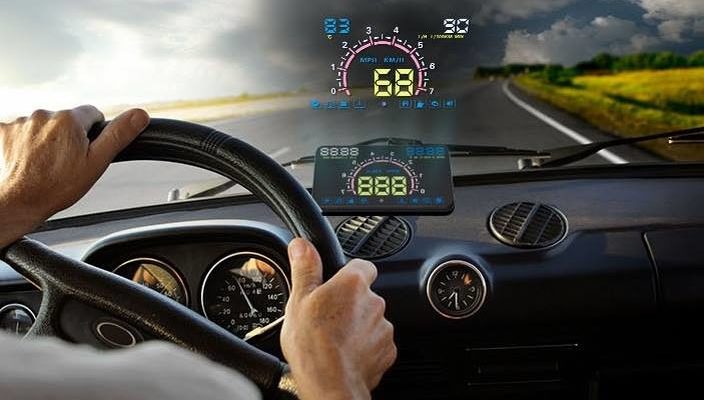Here are suggestions for how to reduce your risk while outside on the road.
Driving a car gets so automatic after a while, it’s easy to let security fall through the cracks. However, even if you’ve never been in an accident before, you should not lull yourself into a false sense of security, failing to execute standard safety precautions that can save your own life, or all your passengers, in an accident. These car safety tips can lessen your chance of getting into an accident and help you manage modest emergencies like a flat tire.

The National Highway Traffic Safety Administration (NHTSA) estimates that 15,000 lives are saved every year because drivers and passengers are wearing seat belts whenever they get into an accident. Seat belts keep the car’s occupants in the car in a collision, control the strongest parts of the body, spread out pressure from the collision, shield the brain and spinal cord and also assist the body slow down after effect, reducing injuries.
In order for a seat belt to be effective, however, it must be worn properly. Ensure that the shoulder belt rests across your torso and shoulders — never across your neck. Don’t set the seat belt under your arms or behind your back. The lap belt should fit snugly over the hips. Seat belt extenders can be purchased for larger-sized drivers and drivers that maintain security while increasing comfort.
Make sure Car Seats and Boosters Are Properly Installed
Contents
Children and infants need special protection in the car to avoid serious injuries and fatalities in an auto collision. The NHTSA recommends that children be securely buckled into a car seat that’s suitable for the child’s age, weight and height. From birth to 12 months, infants should ride at a rear-facing car seat; kids aged 1-3 years should stay rear-facing till they get to the top height or weight limit allowed by car seat makers. From ages 4-7 decades, kids ought to be strapped to a forward-facing car seat with a harness until they outgrow it, and then move up to a booster seat until they are grown enough to safely use an adult seat belt. Keep kids in the backseat at least through age 12.
Always consult with the car seat manufacturer’s directions to set up a car seat, or even better, have it properly installed at your local fire station. You’ll find extra child car seat inspection stations in the NHTSA site.
Never Text While Driving
How harmful is it to be diverted by the action of writing, sending or reading text messages while behind the wheel? Car and Driver magazine ran a test that evaluated drivers’ reaction times to brake lights while attempting to text in their cell phones, and compared them to those of driving with a blood alcohol level of 0.08 percent, the legal driving limit. Driving 70 mph in a direct line, it took an unimpaired driver .54 seconds to brake while a legally drunk driver needed an extra four feet. However, if the driver was sending a text, an additional 70 feet were required to come to a halt. Another study found that texting while driving was the likely cause of over 16,000 street deaths between 2002 and 2007.
Do not Attempt to Multitask
While text messages have a remarkable effect on a driver’s ability to stay safe on the street, other distractions take their toll as well. Talking on a cell phone, eating, use of in-vehicle technologies like navigation systems and other visual, cognitive and manual distractions take the driver’s eyes, palms and focus from the task of driving. Attempt to perform tasks like placing your vehicle’s route, selecting music and making cell phone calls until you start to drive, and pull to handle distractions such as fights between kids.
Roads aren’t just for four-wheeled motor vehicles; even in distant rural areas, there may be pedestrians and bicyclists that aren’t visible to drivers till they get too close. Always maintain safe speeds and take additional care when going around blind curves or above hills. Be watchful for pedestrians crossing the road at intersections, especially when turning , and provide cyclists at least half of a car’s width after passing.
Because bikes do not have seat belts, it is all too simple for motorcycle drivers and passengers to be seriously hurt or killed in a wreck. Motorcycle drivers should steer clear of the blind spots of trucks and be extra careful of different vehicles on the street. Of course, helmets are a necessity for motorcycle drivers and passengers. Drivers of other vehicles should never pass a bike too near, as a blast of air in the car can cause a motorcycle to lose stability.
Pack a Climate-Appropriate Emergency Kit
Roadside emergencies can happen at any time, and drivers should be prepared with supplies that can aid in getting aid, making minor repairs and signaling your vehicle’s presence to other drivers.
You might also want to consider additional clothes, water and nonperishable emergency meals. In cold, snowy conditions, a windshield scraper, tire chains and tow strap, blanket, chemical hand warmers, small folding shovel and a bag of cat litter (for traction on slippery surfaces) may be convenient. You can purchase pre-assembled roadside safety fittings and fortify them with items that meet your needs.
